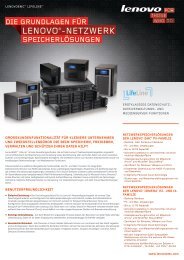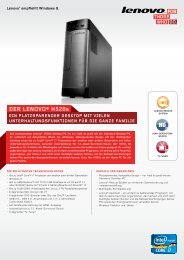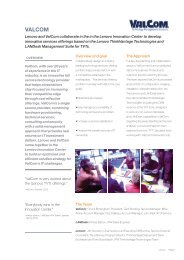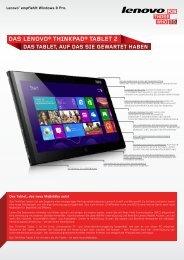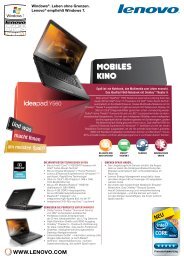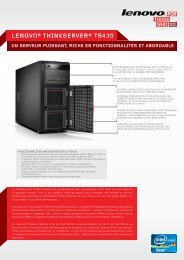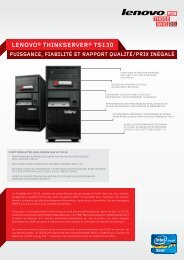Create successful ePaper yourself
Turn your PDF publications into a flip-book with our unique Google optimized e-Paper software.
If you select and enable Password at unattended boot, a password prompt is displayed when the computer<br />
is turned on, from either a power-off state or hibernation, by an unattended event such as Wake on LAN ® . If<br />
you select Disabled, no password prompt is displayed; the computer goes ahead and loads the operating<br />
system. To prevent unauthorized access, set the user authentication on the operating system.<br />
If you select and enable Password at restart, a password prompt is displayed when you restart the<br />
computer. If you select Disabled, no password prompt is displayed; the computer goes ahead and loads the<br />
operating system. To prevent unauthorized access, set the user authentication on the operating system.<br />
Startup menu<br />
You may need to change the startup sequence of your computer. For example, if you have different operating<br />
systems on different devices, you can have the system start up from either of them.<br />
Attention: After you change your startup sequence, you must be extremely careful not to specify a wrong<br />
device during a copy, a save, or a format operation. If you specify a wrong device, your data and programs<br />
might be erased or overwritten.<br />
Attention: If you are using the BitLocker drive encryption, you should not change the startup sequence.<br />
BitLocker drive encryption detects the change of startup sequence and locks the computer from booting.<br />
Changing the startup sequence<br />
Selecting the Startup to display the Boot submenu.<br />
To change the startup sequence, do the following:<br />
1. Select Boot; then press Enter.<br />
• You can use the Boot submenu to specify the startup sequence that runs when you turn on the<br />
power. Refer to “Boot submenu” on page 184.<br />
• You can use the Network Boot to specify the top priority boot device that runs when Wake on<br />
LAN is commonly used by LAN administrators in corporate networks to get remote access to your<br />
computer. Refer to “Network Boot” on page 185.<br />
2. Select the device you want to start first.<br />
Use these keys to set the order that the UEFI BIOS will use when starting an operating system:<br />
• + or - key moves the device up or down.<br />
3. Press F10 to save the changes and restart the system.<br />
To change the startup sequence temporarily so that the system starts up from a different drive, do the<br />
following:<br />
1. Turn off the computer.<br />
2. Turn on the computer; then, while the “To interrupt normal startup, press the blue ThinkVantage button”<br />
message is displayed at the lower-left of the screen, press F12.<br />
3. Select the device you want to start first from the Boot menu.<br />
Note: The Boot menu is also shown when the system cannot boot from any devices or operating<br />
system was not found.<br />
Boot submenu<br />
The following list, showing the order in which devices will be started up, is always displayed. Even devices<br />
that are not attached to or installed on your computer are listed. For each device that is attached to or<br />
installed on the computer, information about it is presented after the colon.<br />
1. USB CD:<br />
184 <strong>User</strong> <strong>Guide</strong>







